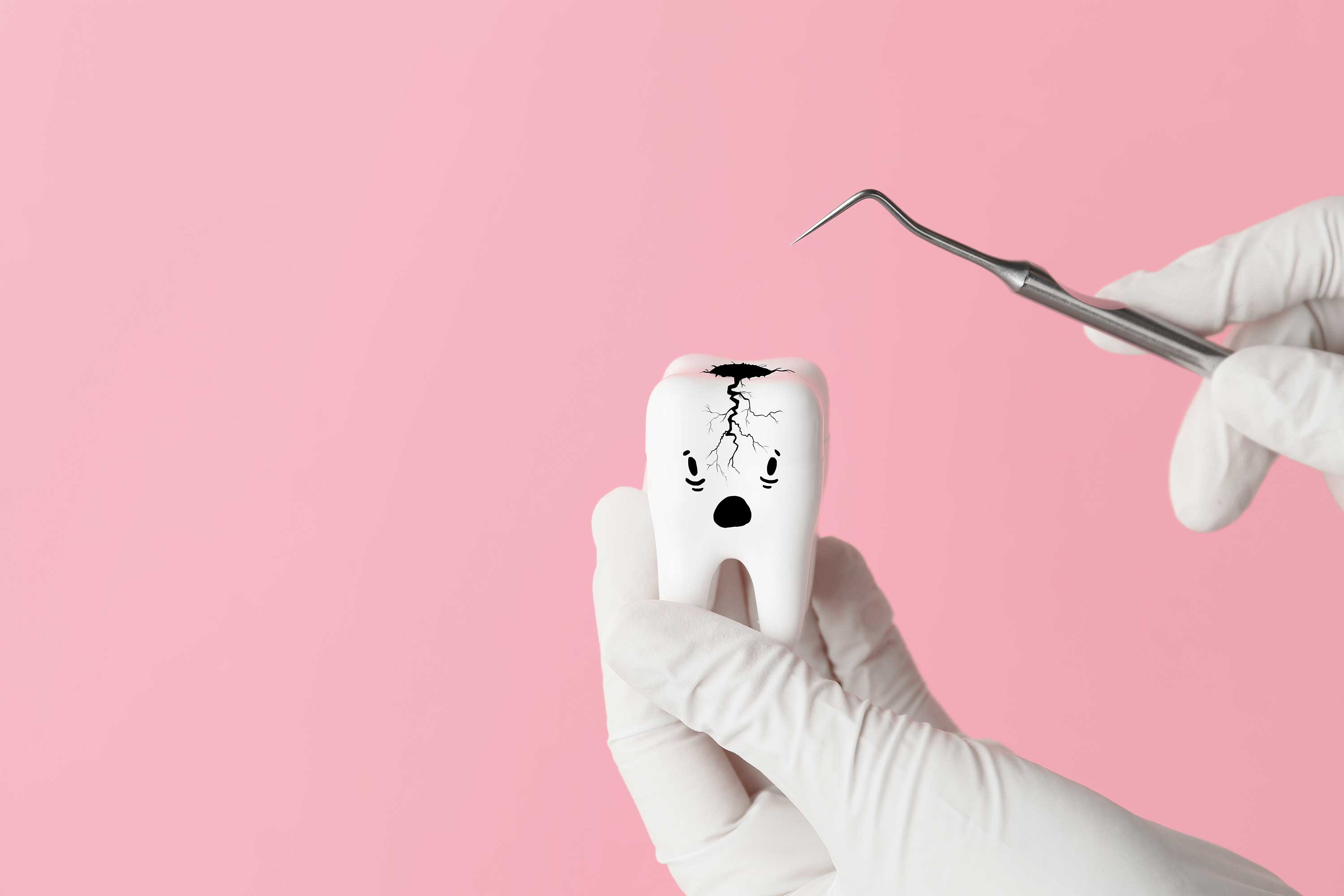The cracked tooth syndrome refers to the splitting of the tooth mesiodistally (from front to back). Patients usually seek medical attention with complaints of pain during chewing. The pain is usually felt more when opening the mouth. In addition to these symptoms, sensitivity may also occur in the tooth. Its detection is quite difficult radiographically. Cracked tooth syndrome can be diagnosed based on clinical findings.
What is Cracked Tooth Syndrome?
Cracked tooth syndrome is the development of a crack that is too small to be seen on an X-ray or under the gum, making it difficult to diagnose. It is usually observed in molars.
What are the Types of Cracked Tooth?
There are many different types of cracks in teeth. The types of cracked teeth are as follows:
- Craze lines: They appear as very small cracks on the outer enamel.
- Broken tubercle: This type of crack usually occurs in a dental filling area that causes slight pain.
- Oblique supragingival (over the gum) cracks: It only affects the crown and does not extend below the gum line.
- Oblique subgingival (under the gum) cracks: It extends below the gum line and can cause pain in the teeth. Treatment may require root canal therapy and a crown.
- Oblique root cracks: Damage usually occurs in the jawbone below the gum line. The only treatment for this type of cracked tooth syndrome is usually tooth extraction.
- Split tooth: It is defined as a crack with different segments. Depending on the location and severity of the crack, an endodontist can save part of the tooth.
- Vertical root fracture: It is a crack that starts in the root and extends to the chewing surface. Although these types of cracks do not cause a lot of pain, they are often diagnosed due to infection or abscess in the surrounding bone and gum tissue.
What are the Symptoms of Cracked Tooth Syndrome?
Many people with this tooth syndrome feel a pain or sensitivity when biting on food or exposing their teeth to hot or cold temperatures. This pain and sensitivity, like in cavities, is not continuous."
What are the Causes of Cracked Teeth?
The factors that can cause cracked tooth syndrome are as follows:
- People who grind or clench their teeth can experience this syndrome.
- If a person's upper and lower teeth overlap, excessive pressure may be applied to a single tooth, leading to its cracking.
- It can occur in large filled teeth.
- It can also occur in teeth that have undergone root canal treatment.
How is Cracked Tooth Syndrome Treated?
During the treatment of cracked tooth syndrome, the dead nerves are cleaned with the help of root canal treatment to prevent infection. A post is placed into the tooth root and tooth to help support it since the tooth cannot regenerate on its own. After this procedure, a dental crown is placed on the tooth to enhance its appearance, strength and protection. If the crack in the tooth has spread to the root, extraction may be the only solution. Early diagnosis is crucial in cracked tooth syndrome, so it is essential to consult a qualified dentist without delay.
How can I Prevent Cracked Teeth?
Although you cannot repair cracks on your own, you can take steps to prevent them, including:
- If you participate in contact sports or perform a job that may cause injury, wear a mouthguard or protective mask.
- When consuming foods such as popcorn or nuts, you should act sensibly. In other words, you should not bite these foods hard.
- Cracked tooth syndrome can occur due to teeth grinding during sleep or as a result of stress and anxiety. Therefore, you can use a retainer or mouthguard while sleeping.
Remember, ignoring the pain in your mouth or tooth is not a treatment plan. However, the pain caused by a cracked tooth is a sign that you need to seek help. Therefore, you should be careful and not hesitate to make an appointment with your dentist.
